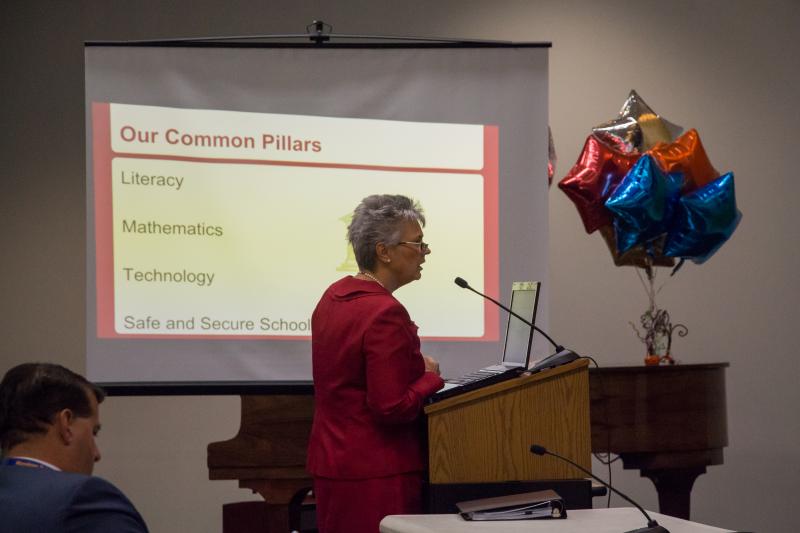School Committee scrutinizes public school system improvement plans
Classroom technology use, gendered graduation rates, and preparation for high school were all hot topics in the discussion of the 2015 - 2016 school year school improvement plans at the School Committee’s meeting Wednesday night.
The principals and assistant principals from the public school system came under scrutiny for the ways in which they have been addressing some of the largest issues within each school.
Presenting in tandem, Decas Elementary School Principal Donna Noonan and Minot Forest Elementary School Principal Joan Seamans addressed the various concerns of the Committee, including how they were teaching children with outside-the-box methods that could help children learn in diverse ways.
“We are teaching students how to think differently, using the lattice method,” Seamans said, referring to a method of teaching multiplication. “Parents do not know how to do that.”
Seamans also said the two schools were working to integrate technology into nearly every aspect of the elementary students’ academic lives.
Principal Daniel Minkle of the Wareham Middle School gave an overview of the practices he believes the middle school needs to continue, in order to best educate the students, including assessing the students in-depth to “discover their strengths and weaknesses.”
“We are further along with that than we’ve been in the history of our education,” Minkle said.
Minkle also said the school has tried to approach academic interventions with students using the data the administration has collected through the student assessments. Minkle later explained that, if a student is having difficulty with a subject, he or she will be scheduled into an "intervention" class that will focus on the problem subject, and help the student get better at it.
Committee Chairman Geoff Swett raised concern over the preparation students undergo in the middle school for high school. Swett said that, though he had a positive conversation with one top student going into high school, he said that the conversations he has had with equally intelligent seniors have been quite the opposite.
“I’ve had conversations with seniors ... who ... have really struggled,” Swett said. “It took them a long time to get successful at the high school.”
Swett’s main concern over the high school was the disparity between male and female graduation rates from Wareham High School. According to Principal Scott Palladino’s collected data, which he presented at the meeting, female graduates significantly outnumbered male graduates. Though, according to Palladino, this is a national problem, Swett said he was only interested in “what we are doing with what seems to be a problem.”
“94 percent versus 77 percent is a big difference,” Swett said. “So what are you not doing for the male population of the high school?”
Assistant Principal Debbie Freitas said the school was actively attending conferences to learn new strategies to increase male graduation rates.
“We are trying to engage the students in the classroom,” Freitas said. “We haven’t landed on anything yet that has made any particular impact. This is something we are still working on. This is something we still discuss … every quarter.”
Wareham Cooperative School Principal Kathleen Moore said the school mitigated the issue of drop-out rates at the cooperative school program by combining the two different programs within the alternative school that were originally kept separate.
“[The students] were sending us the message all along — ‘we belong together,’” Moore said.
The Committee also briefly discussed and approved a change to the new bus transportation policy, to be rolled out in the fall.














